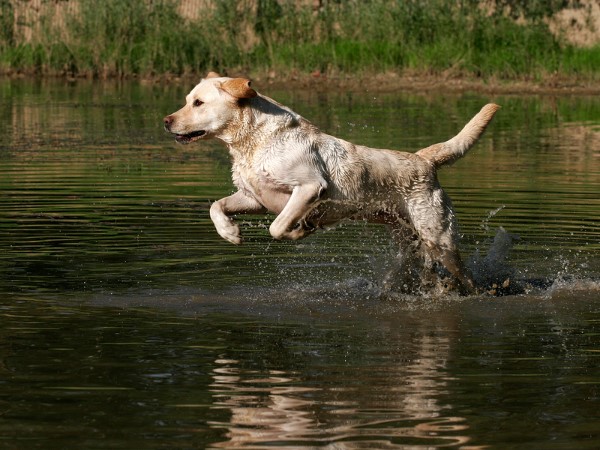Common Reasons for Surrender
The most common cause for surrendering the Labrador retriever is that the owner moves, loses their job, becomes pregnant, or simply finds the expense of keeping the lab overwhelming.
Pros
The lab knows how to have fun! He enjoys varied activities and hanging out with the family is his favorite thing to do. Labs are known for their high intelligence, good nature, loyalty, and ability to serve as helpers to the disabled. If you have an active lifestyle, the Labrador retriever will happily join you in hiking, jogging (health permitting), and swimming.
Cons
Labs are generally fun and friendly, but they tend to have health issues and shed year round. Labrador Retrievers shed a lot, but they are easier to groom because they have short hair. If she does not get this activity, she can become bored and destructive.
Diet
Margaret Huston, president of Heart of Texas Lab Rescue, told PetStarter, “We recommend avoiding food with corn, wheat, by-products and preservatives.” Huston and most rescuers and breeders look for a kibble food where the first ingredient is real meat.
Exercise
The lab is not a lap dog and craves physical and mental stimulation and thrives on being with an active family. She needs daily physical and mental exercise and enjoys training and puzzles and toys—anything to keep her moving!
Possible Health Issues
Labrador retrievers are prone to ear infections, hip dysplasia, laryngeal paralysis, and obesity. A yearly exam by a veterinarian and feeding your dog a high quality dog food can help prevent some health issues from developing.
Housing
The housing itself doesn’t matter as much as the activity and quality time the people spend with the dog. Labs are people pleasers and should not be left outside in the yard all the time.
Grooming
Labs have a double coat and shed year round, but daily brushing at home and serving your lab a high quality dog food will lessen the shedding around the house.
Training
They are smart and easily trained, and love to please their people!
Entertainment
The lab is meant to be a member of your family, not a dog to be put in the back yard. Her number one fun will be gleaning attention from your family, and she will attempt to join you in any activity that interests you.
ADDITIONAL RESOURCES
We want to thank the Heart of Texas Lab Rescue for help with this profile.








